A Night in Pattaya With The Sony NEX-5/ATI 5450 Silence Video Card, Review

|
• C H Hotel • Centara Duangtawan Hotel • Chedi Chiang Mai Hotel • Chiang Mai Plaza Hotel |
I have some unfortunate news to report on this project and total 100% transparency is how I feel this should be handled. My planned beneficiaries of this project, innocent very much in need children at a certain orphanage, have fallen victim to their local manager who we have found cannot currently be trusted and I doubt this is likely to change. Decisions need to be made if we're going to carry this project forward and if so who the new beneficiaries will be. I do expect this project to generate significant revenue so I take it very seriously. As you read this I'll be back in the Mae Sot area investigating further. I'll keep you informed. For now I'll still collect images with the intention of making the best most meaningful mosaics possible and as always, I'm asking for and will greatly appreciate your help with the images.
We are still accepting (and pleading for) images of children from SEA. No matter how terrible you think
they are, please send them in anyway. These images will be used to complete a set of 3 high quality mosaics which will be sold to benefit the Karen and Burmese Orphans living in the orphanages and refugee camps. The more images the better, I can
use all you have. Please take the time to go through your images for anything you think might help. If you missed the "No Place to Call Home" special, you can
click on the link and read more about this. Thank you! info@BangkokImages.com
Quick Click Links
Feature Photograph
A Night in Pattaya With The Sony NEX-5 HIS ATI 5450 Silence Video Card, Review
Photography News of Interest
Readers Submissions
Readers Questions A Snapshot of Bangkok Images Week in Review
Infocus Blog, Two BoxesT
Feature Photograph *menu

Sony NEX-5, 16mm F2.8 lens, Auto HDR Mode, Jpeg output ISO 200
This is a rather ordinary image of a sports car in the Central Mall in Pattaya. Until you examine the image a bit you won’t notice what makes this image significant. For the most part it just seems like a car shot like any other.
But let’s look further. First, the light balance and exposure is exceptional. The car itself is perfectly exposed and so are the accent lights in the ceiling, the floor, and inside the windows of the stores. How is this possible when it’s
obvious all these areas have different levels of luminance which significantly exceed the dynamic range of the camera? It’s possible because this is a High Dynamic Range (HDR) shot. 3 images, 1.3 stops separate, combined
to make one shot with a perfect exposure.
How about the focus? On the car itself it’s perfect from the front plate to the rear whale tail. And the perspective puts the front of the car looming forward while the car itself stretches rearward just as if you’re standing there in front
of it. Which is exactly where I was. Less than 18 inches from the car using the perspective and extreme DOF a wide angle provides.
More, it’s obvious I didn’t take this from the standard standing position. It almost looks like I was kneeling down. Gee, a car shot in the mall, having to kneel down, take three shots combining the exposure, use a lens that allowed this
“in your face” perspective, sounds like a lot of work? How many shots/attempts do you think it took for to get this acceptable image?
One. And I did it with ease. And this is what makes this image significant. Using the Sony NEX-5 with a 16mm lens (24mm 35mm effective), the articulating screen flipped up so I can use it as a waist level viewfinder, in “auto HDR”
mode, I snapped one single picture and it turned our perfect. In fact, I took it as a jpeg peg so absolutely no processing was applied of any sort other than resizing it for this column. I’ll be shooting jpegs with the Sony NEX-5 exclusively
(actually RAW+Jpegs) until Lightroom 3, ACR (Adobe Camera Raw) or C1 Pro supports its RAW files. The Sony software absolutely stinks!

Sony NEX-5, 16mm F2.8, Auto HDR, Jpeg Output ISO 200
This new model doesn’t have nearly the effect. It’s missing the perspective. Why? I was holding the camera at eye level looking down at the car. One look at the viewfinder and I realized my mistake, moved out the articulating LCD and shot
the rest of the cars from waist level.
A Night in Pattaya With The Sony NEX-5 *menu
This was an overnight trip to introduce my 17 year old son to Pattaya and Walking Street, places he’s only read about until now and he’s been in Thailand every summer for 5-6 years now. We’ll look at some images through the lens of
the Sony NEX-5 small pocket size camera and I’ll discuss the different modes and why they’re useful as we go along. These images will all be unprocessed jpegs unless otherwise noted.

Sony NEX-5, 16mm F2.8, Auto HDR, Jpeg Output ISO 1600
This is a shot of the front of the Mecure where we stayed. Notice that we can clearly see the inside of the windows are well exposed? Perfectly exposed actually.
Look at this image below:

Sony NEX-5, 16mm F2.8, Aperture Priority, Jpeg Output ISO 1600
Notice how the interior is completely blown out? This is how most pictures would look from most point and shoots using an automatic exposure mode. But with the Auto HDR function enabled the picture above is much better exposed. A nice feature that took
no extra work other than setting a menu function.

Sony NEX-5, 16mm F2.8, Auto HDR, Jpeg Output ISO 1600
This image of the hotel lobby was also captured using Auto HDR. No processing involved.

Sony NEX-5, 16mm F2.8 Auto HDR, Jpeg Output ISO 1600
This lady had fallen asleep at her stand and made for an appealing image. Notice that as the ISO climbs to 1600 detail falls off sharply? This is common with all cameras, but seems a bit excessive with the Sony NEX-5. I attribute this to the early version
of firmware and jpeg processing. I can’t wait until the raw files are supported in the regular programs such as Lightroom 3 and ACR.

Sony NEX-5, 16mm F2.8, Auto HDR, Jpeg Output ISO 1600
These converted micro-buses are found throughout Bangkok and Pattaya and are essentially mobile bars. A great idea really, stop the car, set out a few barstools, and start serving what appeared to be rather expensive drinks! The auto HDR feature of the
Sony NEX-5 lends itself well to these scenes.

Sony NEX-5, 16mm F2.8, Auto HDR, Jpeg Output ISO 1000
We all know this view. But notice in this one the outside is well exposed and you can see well inside the windows as well?
Now look at the image below.

Sony NEX-5, 16mm F2.8, Auto Exposure, Jpeg Output, ISO 1000
Notice inside the windows? All blown out. If I’d bothered to process the Auto HDR image above the difference would be even more dramatic.

Sony NEX-5, 16mm F2.8, Auto HDR, Jpeg Output ISO 1600
Another Auto HDR shot, notice the well balanced exposure and highlights? Straight out of the camera! Bright lights in the signs are well handled, the bright lights of the cars subdued, a much nicer picture than the one below.

Sony NEX-5, 16mm F2.8, Auto Exposure, Jpeg Output, ISO 1600
My what a difference! Signs blow out, not much contrast, pretty much the type of scene you’d expect with a regular point and shoot camera.

Sony NEX-5, 16mm F2.8, Auto HDR, Jpeg Output ISO 1600
My son looking up at the gawd awful Samsung Walking Street sign. Nice well balanced exposure thanks to HDR.

Sony NEX-5, 16mm F2.8, Auto Exposure, Jpeg Output, ISO 1600
Another dramatic difference. It’s becoming obvious that for night scenes the Auto HDR works quite well. I hear you asking “but, doesn’t it take more time, don’t you need a tripod, isn’t it a lot of work?” Not with the Sony NEX-5. It’s 7 frames per second frame rate makes taking the shots as easy as taking a single shot, and the in camera CPU does all the heavy lifting. If you like you can process the HDR by changing the toning if you don’t
care for how the camera processes the image. I’m just using the standard settings so you can get a feel for how this camera handles this environment. It also helps that I use a very fast SanDisk 32gb SD card that can write at 60mbps so
I NEVER have to wait for this camera to write to the card before taking another shot.

Sony NEX-5, 16mm F2.8, Auto HDR, Jpeg Output ISO 1600
A common view of walking street with the exposure well handled, all the signs readable, very nice actually.

Sony NEX-5, 16mm F2.8, Auto Exposure, Jpeg Output, ISO 1600
What a difference! Blown out signs, blown out exposure. Sure, this is in auto and with a bit of negative EV I would have yielded a better image, but not with the balance of dynamic range using the Auto HDR feature. I should mention, that the Auto HDR
feature allows you to easily set the amount of ‘stops’ between the three images it captures and processes. For a less heavy scene I used a mere .7 stops, for other scenes a full 2 stops, and some extreme scenes 3
stops. I do which Sony would have gave us the option to add more than 3 images into our HDR. 5 and 7 and 9 images would be excellent. Perhaps in a future firmware upgrade.

Sony NEX-5, 16mm F2.8, Sweep Panorama Mode, Jpeg Output, ISO 1600
Many times with the Sony NEX-5 the most difficult part of making a capture is deciding which mode to use. HD movie, Intelligent Auto, Auto HDR, High DRO, 16:9, or in this case Sweep Panorama. Hold down the shutter button and sweep the camera across the
scene and the camera automatically makes the captures at a fast 7fps and then in-camera processes and stitches the images together in a 8000 pixel very side image. A full size peek at this image is incredible, but an 8000 pixel image is way too
big for this column.

Sony NEX-5, 16mm F2.8, Auto HDR, Jpeg Output ISO 1600
Another Auto-HDR from Walking Street. I won’t bore you showing you the regular images from this point on unless the difference is more profound than what you’ve already seen above. I should caution you that a 16mm lens takes some experience
to use with competence and most amateurs would be better served starting out with the excellent 18-55mm F4 image stabilized lens which I also have and like very much. It’s a bigger lens so it’s not a “pocket” camera when it’s attached like with the 16mm.. but it is a very useful lens.

Sony NEX-5, 16mm F2.8, Auto HDR, Jpeg Output ISO 1600
Inside a bar the camera acquits itself very well and the Auto HDR function helps quite a bit. No flash, no special techniques, I did use the table top to set the camera on to stabilize it, flipped up the articulating LCD so I could see to frame the image,
and that was it.

Sony NEX-5, 16mm F2.8, Auto Exposure, Jpeg output, Flash, ISO 1600
The Sony NEX-5 is packaged and comes with a very tiny (about as big around as a quarter) external flash unit that mounts and lays flat out of the way which is how I leave it attached, and when you want it to “fill” or whatever mode you want to use it in, you simply flip it up and it’s active. In this case all the ‘mood’ lights of the bar goes away and you see it as it is. You’d think ISO 1600 wouldn’t have that much detail,
but with the proper light it’s actually quite decent, look at the image below, a 1:1 crop of the keyboard player.

Sony NEX-5, 16mm F2.8, Auto Exposure, Jpeg Output, Flash ISO 1600
Notice the finer detail you wouldn’t normally expect at ISO 1600? And you really wouldn’t expect this tiny flash to provide so much light in so big an area. Very impressive!

Sony NEX-5, 16mm F2.8, Auto Exposure, Jpeg Output, Flash ISO 1600
Another crop using the flash, catching the bar hostess standing on a stool adjusting a fan for a customer. Again, ISO 1600 using the tiny included flash.

Sony NEX-5, 16mm F2.8, Auto HDR, Jpeg Output ISO 1600
This is quite the blurry shot, but this chap primping his hair in the mirror before going back to dance with a bar hostess is probably a great reason to regulate your intake of alcohol.. ;o) My son had a good belly laugh at this guy.. and I suspect so
did everyone else in the bar.

Sony NEX-5, 16mm F2.8, Auto HDR, Jpeg Output ISO 1600
Another image using the table top as a tripod and the articulating LCD as a viewfinder. No one was the wiser with me taking pictures in this manner. However, I did ask and obtain the bar managers permission and I wouldn’t recommend you try sneaking
shots (or worse yet, HD Movies) with this camera without the proper permission.
You’re probably thinking these are “DSLR” quality images. Yes, they are. The Sony NEX-5 has a DSLR sized APC-S sensor like you’d find in a Nikon D300 or Canon 50d. It’s
not a full frame sensor like the Canon 5d Mark II and the 16mm F2.8 lens sure isn’t a Canon 35mm F1.4L lens, but then it’s only a $600 total package vs. over $5000 for the pro gear. AND you can carry it in your pocket!

Sony NEX-5, 16mm F2.8, Auto HDR, Jpeg Output ISO 200
The next morning my son and I visited the Sanctuary of Truth and I had a chance to try the Auto-HDR feature in the bright sunlight. I’m still quite pleased, we achieved a nice sky with detailed clouds and fine detail of the carvings. Look at the
crop below:

Sony NEX-5, 16mm F2.8, Auto HDR, Jpeg Output ISO 200
This is a 1:1 crop of the image above. Obviously the 16mm lens holds its own quite well and I could easily print this image at 20×24 inches and have tons of eye catching detail! Perfect for vacation shots.

Sony NEX-5, 16mm F2.8, Auto Exposure, Jpeg Output ISO 200
My son on the staircase landing. Again the detail from center to sides is exceptional with this lens (stopped down to F5.6 or better). Look below for another 1:1 crop.

Sony NEX-5, 16mm F2.8, Auto Exposure, Jpeg Output ISO 200
How is that for exceptional detail! And from a jpeg to boot! I’ve only had this 16mm lens for four days now but I’m really loving it. Especially at its price point. I have much more expensive wide angle lenses which can’t do as well.

Sony NEX-5, 16mm F2.8, Auto Exposure, Jpeg Output ISO 1600
Not a bad interior shot at ISO 1600, not an HDR shot, but decent.

Sony NEX-5, 16mm F2.8, Auto Exposure, Jpeg Output ISO 1600
Another interior shot. You’ve probably noticed that I haven’t taken advantage of the Sony NEX-5’s higher ISO capabilities of up to 25,600. I’m saving “special features” for another time. So far
these are all automatic modes anyone can take advantage of with ten minutes of instruction.

Sony NEX-5, 16mm F2.8, Auto Exposure, Jpeg Output ISO 250
Here the hundreds of skilled artisans carve out each small piece of the temple.

Sony NEX-5, 16mm F2.8, Auto Exposure, Jpeg Output ISO 200
With the articulating LCD you can easily get a much lower perspective than with a regular DSLR and I think this gives a very nice perspective with an uncommon ease.
All in all I’m pretty impressed with the Sony NEX-5. I still plan on covering a “Part II” to my original review, but only after considerable use. I’m taking the time to publish
these images and the techniques I’m using because I think this is a great camera for the money which will fit the needs of a good many of our readers.
You can make HDTV movies in 720p, panorama’s, HDR’s, and much more.. there is a lot to like about the Sony NEX-5, and there is also a lot of room for the camera to mature. The big question is will Sony help the NEX-5 mature via firmware,
or will they slight all their early adopters by incorporating improvements they could do in firmware, into a new model. Sony has blown it lately when it comes to taking care of the customer and customer loyalty is at an all time low. I hope they
wake up with the NEX-5 and take care of the customer.
ATI 5450 Silence Video Card, A Review *menu

For pure imaging work you don’t need to spend a fortune for a video card, even one that works with OpenGL and is compatible with Adobes latest version of CS5 Photoshop. This will be a quick review to let you know such a card exists, it costs under
baht 2000, and it works very well.

I recently upgraded my main video card to a very powerful ATI 5970 card and it runs both my NEC LCD2690uxi2 Spectraview II monitors. A fast video card does render images faster, and can make dramatic differences when rendering video.
With ATI’s new “EyeFinity” you can run three monitors from any 4000 and 5000 series ATI card, and there are a lot of them in this model range. The caveat is the third monitor MUST be a Displayport. Why ATI did this
I can’t tell you exactly, but it’s for technical reasons and it’s a limitation we have to live with. I need to run both my NEC image monitors AND my 1080p HDTV. With the new 5970 card running my imaging monitors via DVII needed
an inexpensive, single slot, native HDMI, passively cooled (didn’t want fan noise) video card with 7.1 Digital Dolby. HIS has more than a few of these available,
from the 4300 series, to the 4400 series to the 4500 series. After that they require fans as the power increases and along with more power comes more cooling needs.

Originally I purchased the 1200 baht 4350 card and everything seemed to work UNTIL I brought up Adobe CS5. CS5 crashed. If I removed the 4350 card my imaging monitors worked fine with CS5 using my 5970 card. Calling Adobe I was given the good news that
“both video cards ‘should’ be the same.” Well damn, I’m not spending another 24,000 baht just to run a single HDTV. It just doesn’t make sense.
So, I sat down and carefully studied the specifications of both CS5 Photoshop and the ATI cards and determined the type of memory (in this case DDR3), OpenGL 2.1 matching versions, and the same PCI Express 2.1 compatibility were the determining
factors. The 5450 card was the only one meeting the specs for CS5, and my requirements for a single slot, passively cooled, native HDMI with 7.1 sound card. I called my local computer store at Pantip and they sent one out via Motorsai driver to
exchange for the 4350 and collect a few more baht.

I wanted the single slot design so I could use the furthest PCIe slot on my mother board so ample air could flow around my much more powerful ATI 5970 video card. I wanted it passively cooled (no fan) so
I wouldn’t have to listen to a cheap fan buzz away. And I wanted a native HDMI that would power my new 50” HDTV at its native 1080p resolution and decode the latest 7.1 Digital Dolby and DTS and other sound codecs for the latest
movies. The 5450 card fit the bill exactly!

As you can see it has a DVI port and native HDMI port. I tried it, you can run a DVI imaging monitor and HDMI monitor from this inexpensive card. If you don’t play games or render video, it actually makes sense to use an inexpensive card such as
this. It also comes with a VGA to Displayport adapter.

The most important thing for my system is that it can co-exist fine with my more powerful ATI 5970 card and Photoshop CS5 and it meets all my requirements. The video on the HDTV is perfectly rendered and the audio is superb. This is a great card and would
be ideal for a HTPC (home theater personal computer) system. For under baht 2000 this is a very smart buy for any system where you don’t need the power to run games or render video.
In the near future I’ll also review the ATI 5970 cards and go over the reasons for replacing my (2) ATI 5770 cards (fine cards, but created heat issues because they were both double slot cards placed very close together).
The heat caused the failure of one of my 5770 cards and diagnosing what was going on took me several days and a huge amount of frustration. Things aren’t always what they seem. But once I determined the card was the issue, I wasn’t
going to put a replacement back in the same high heat situation, especially when my local dealer willingly allowed me to apply my broken card to an upgrade.
The 5450 card is a great card, perfect for imaging, but not powerful enough for rendering video (in a reasonable amount of time) or playing games. It’s highly recommended for imaging.
Photography News of Interest *menu
If you render video or just must have the most powerful personal computer on your block then a motherboard hosting a pair of 5600 Xeon CPU’s is just the ticket. 12 cores and 24 threads.
Read how it works with Adobe CS5 here.

I can’t believe some of these stories I’m reading about with photographers being hassled for taking pictures of public buildings in the USA. We’re not as bad as the
UK yet, but we’re getting there. Read this and be infuriated.

But wait, there’s more. 10 incidents where photographers were asked to stop taking pictures in the USA! Unbelievable.

This Novaflex adapter allows Canon EOS users to mount Nikon lenses on their Canon’s while retaining
much of their electronic and metering functionality.

Sony unveils their new 24mm F2, 35mm F1.8, and 85mm F2.8 Alpha lenses. These are Carl Zeiss designed lenses
and should really bring a smile to Sony/Minolta users!

Sony also announced their new Carl Zeiss Distagon 24mm F2 SSM lens for the Sony Alpha system. This promises to be quite the
lens!

This is cute. Six tips for photography at your ex-girlfriends wedding. A humorous look for
sure.

Readers Submissions *menu
Hi
This is the 19th annual calendar show held here in Long Beach every year.
Nice day – Great place to have a show.
Bart








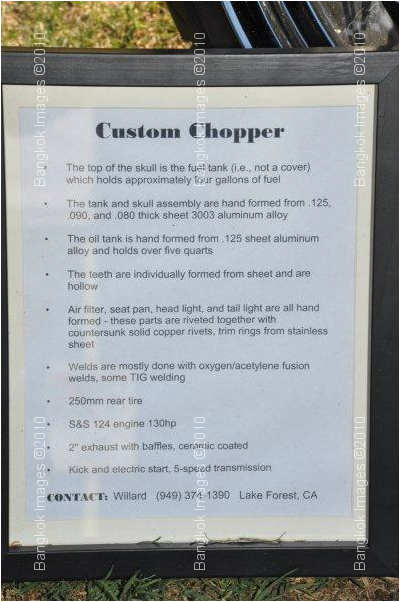
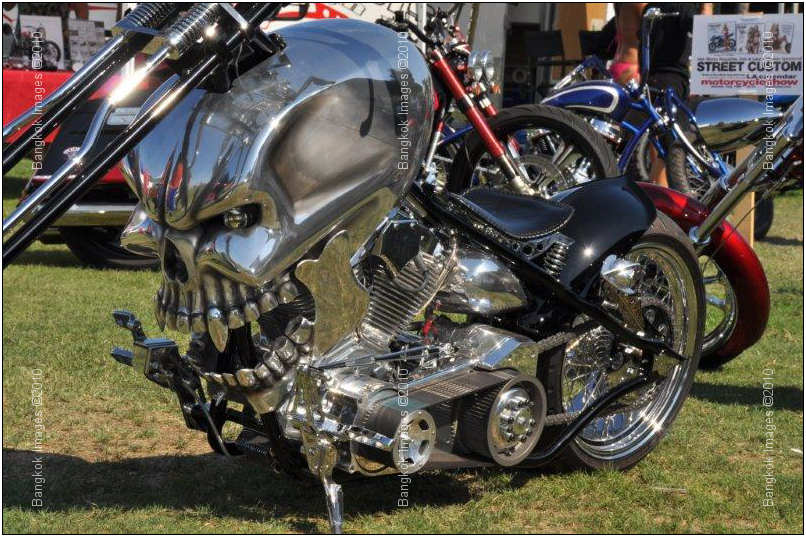
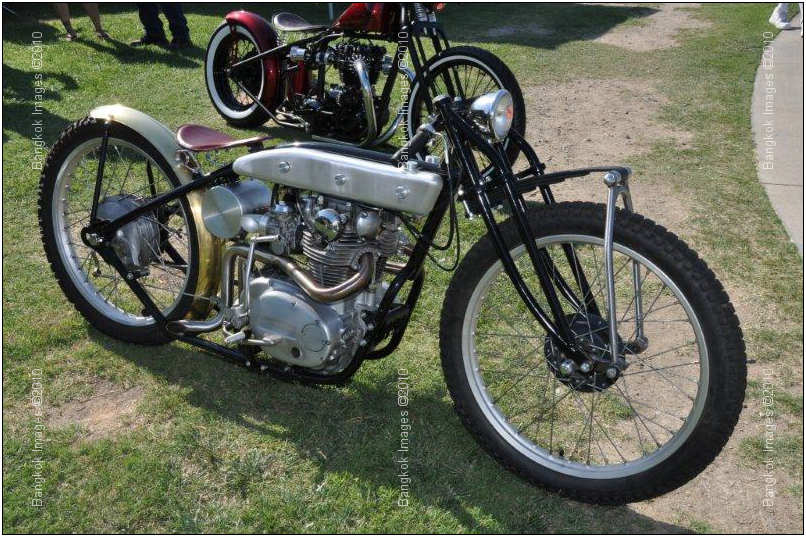
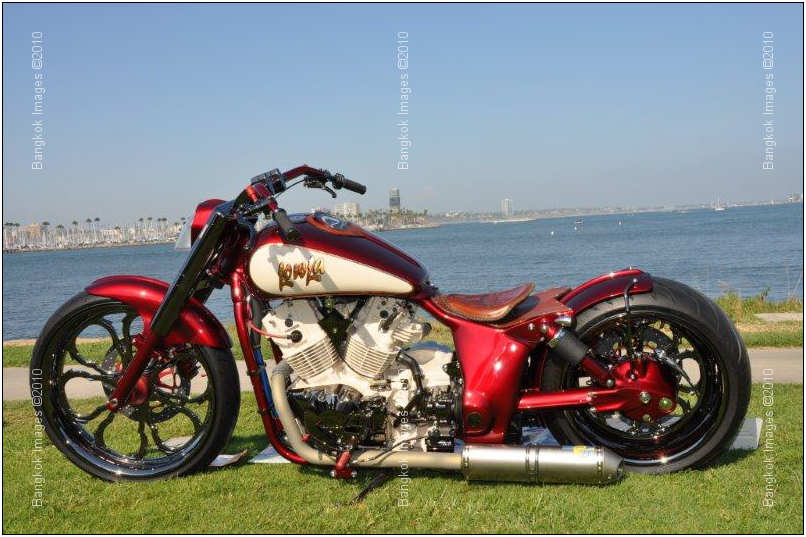
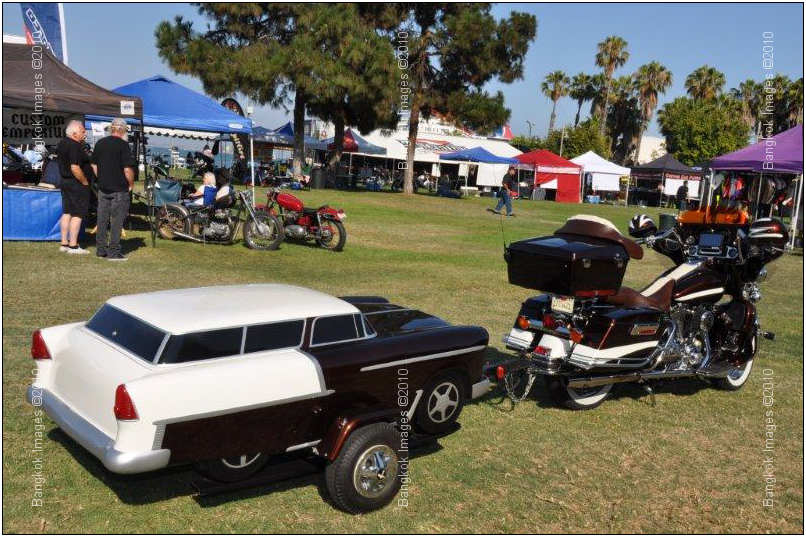
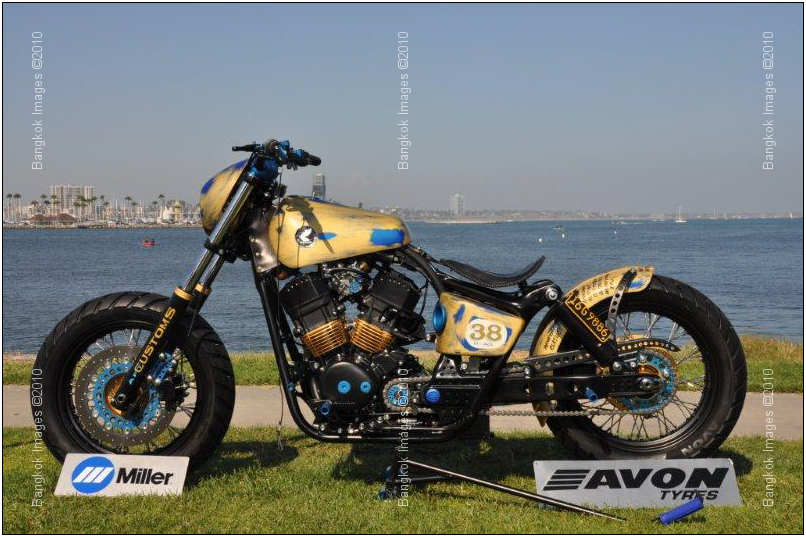
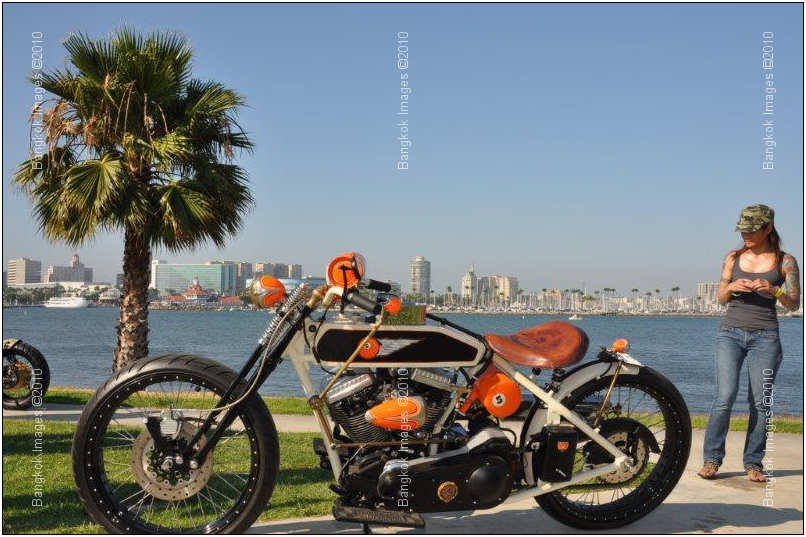
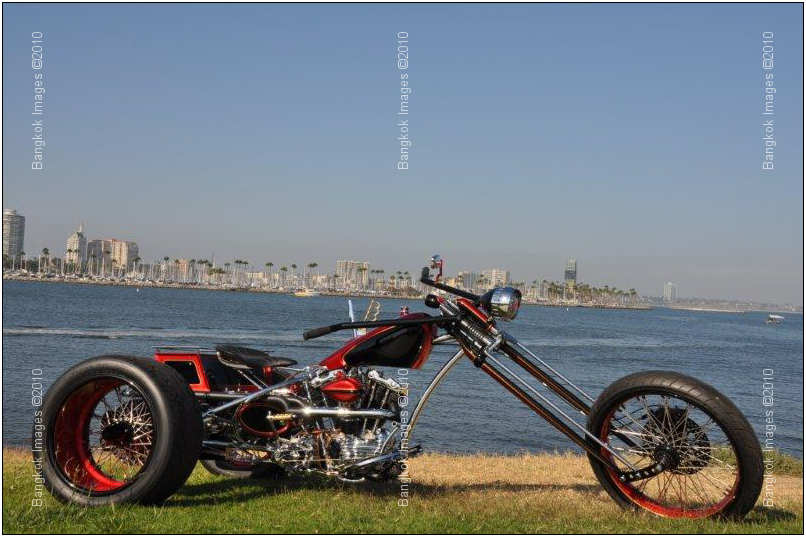
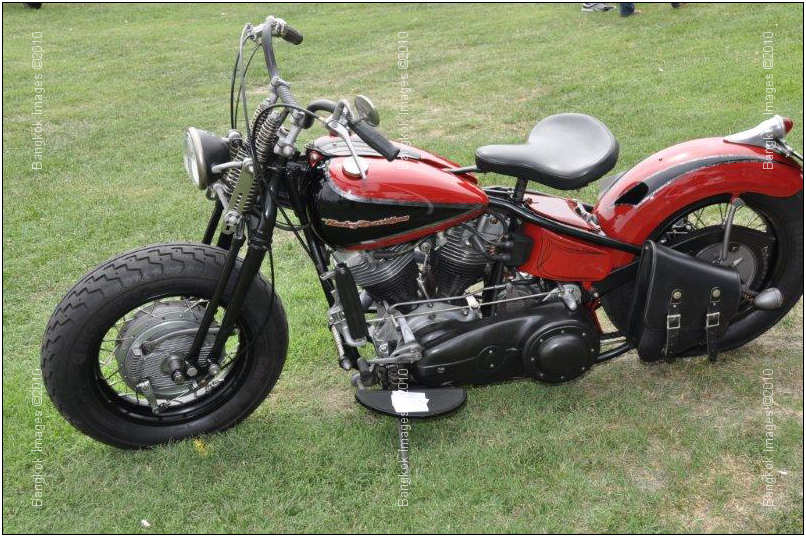
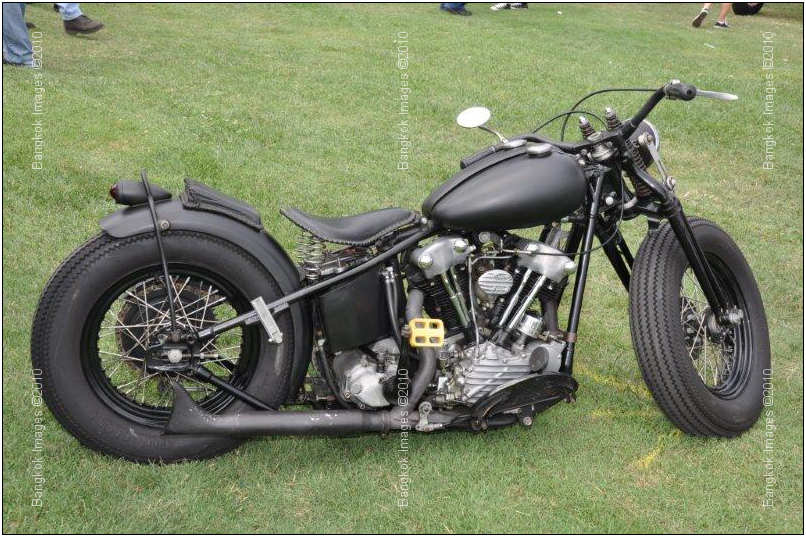
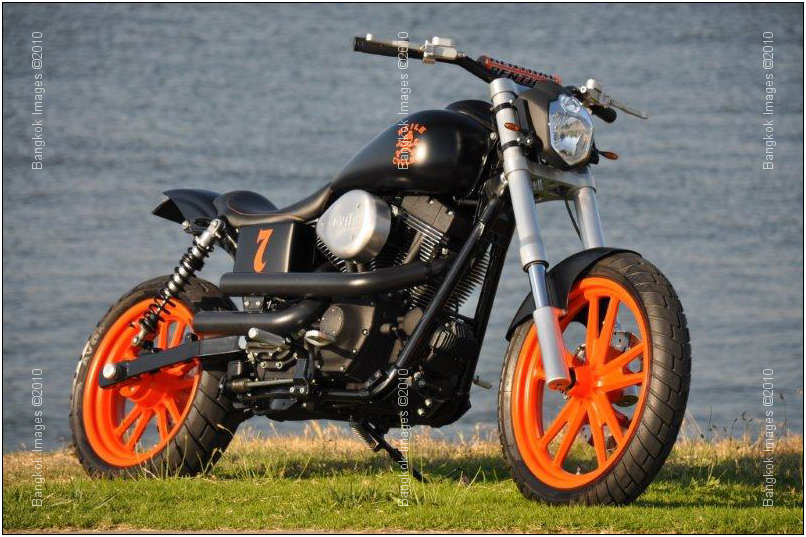
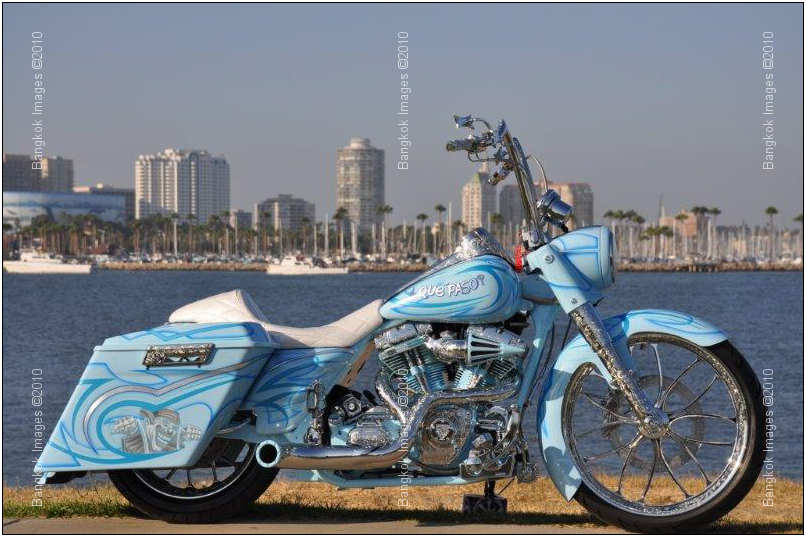
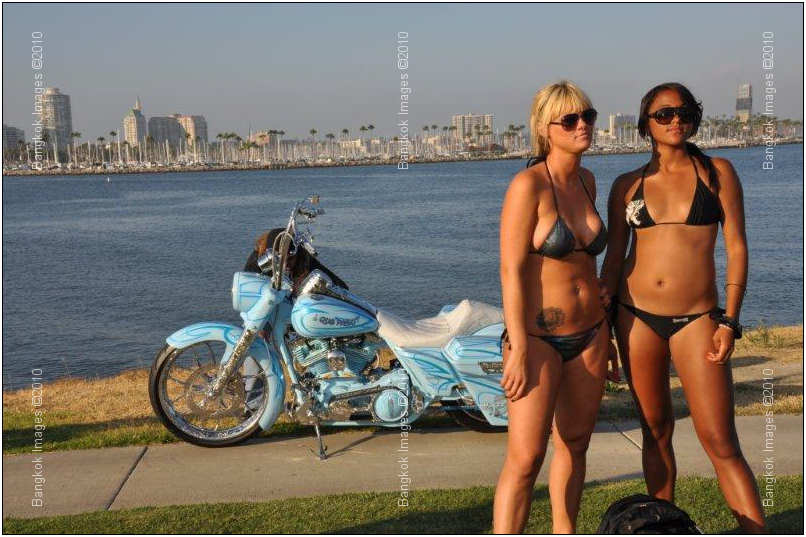
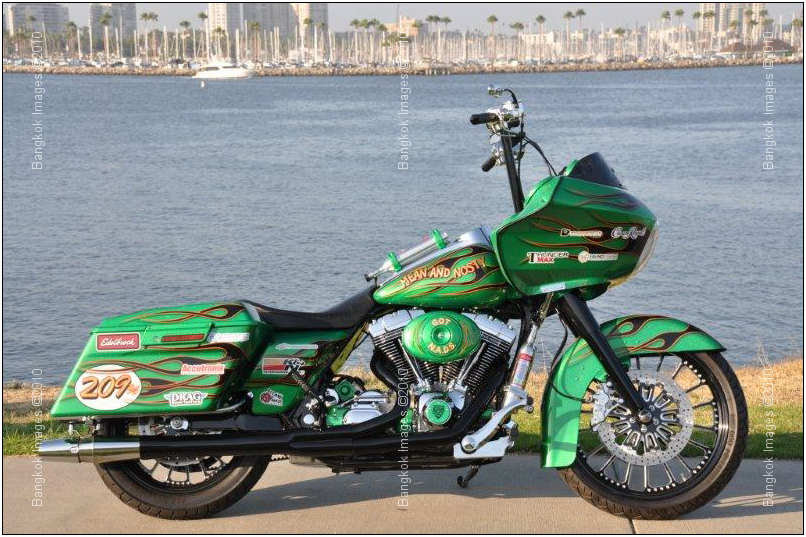
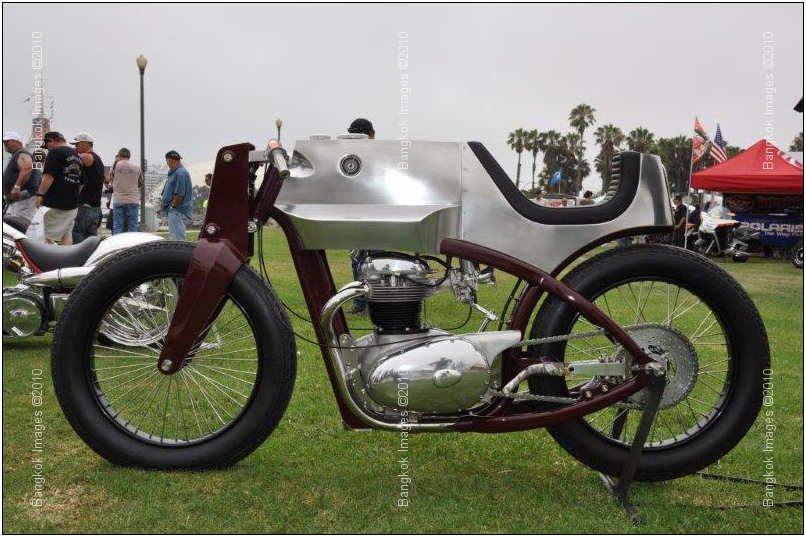
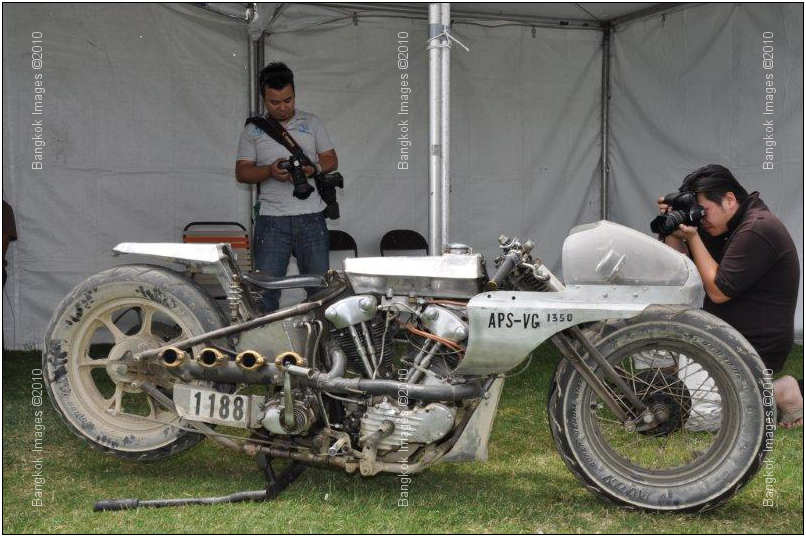
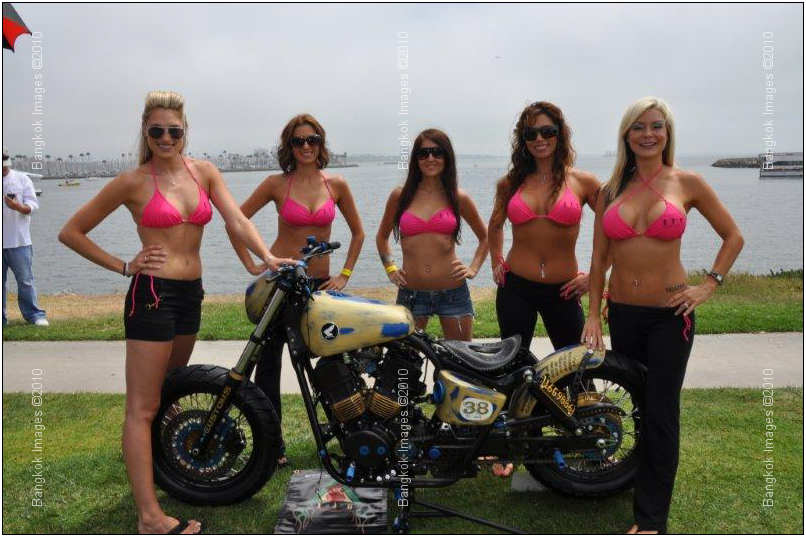
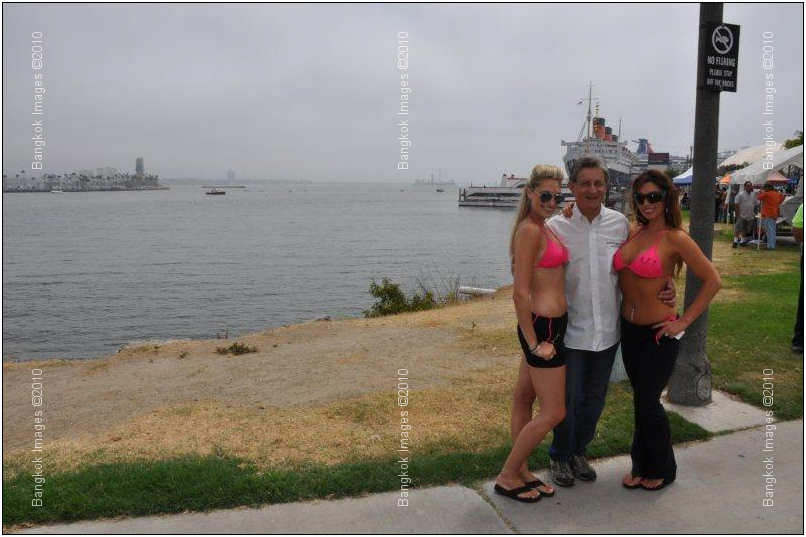
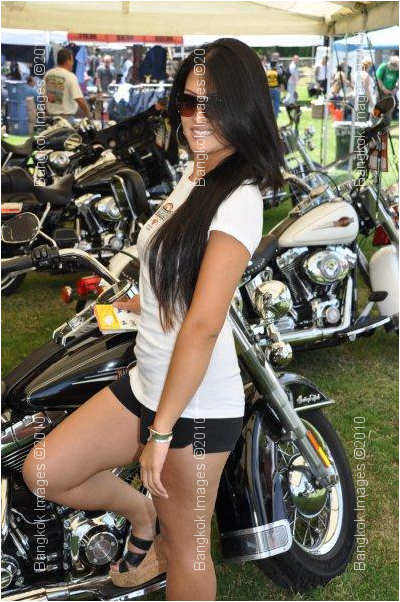
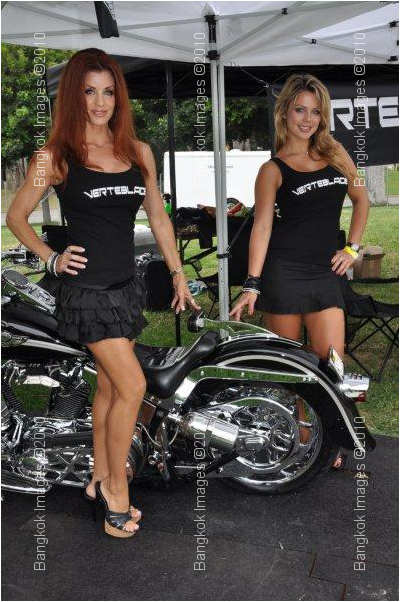
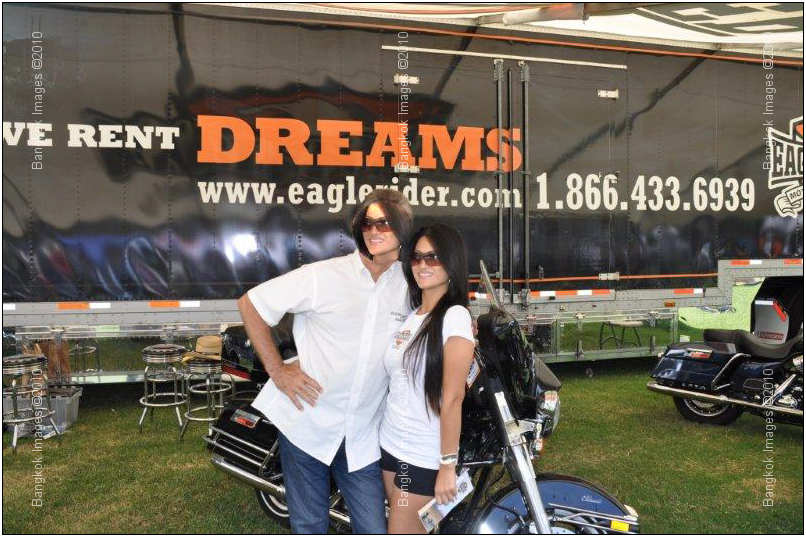
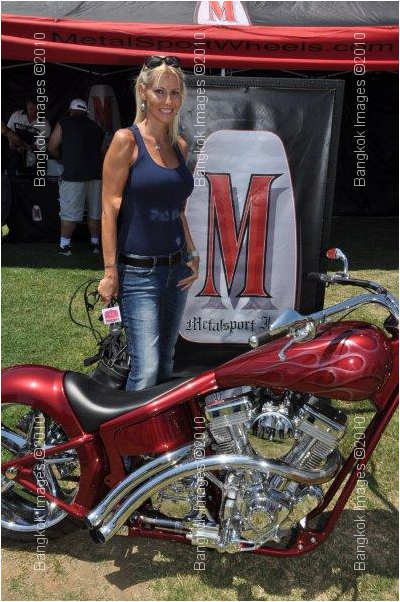
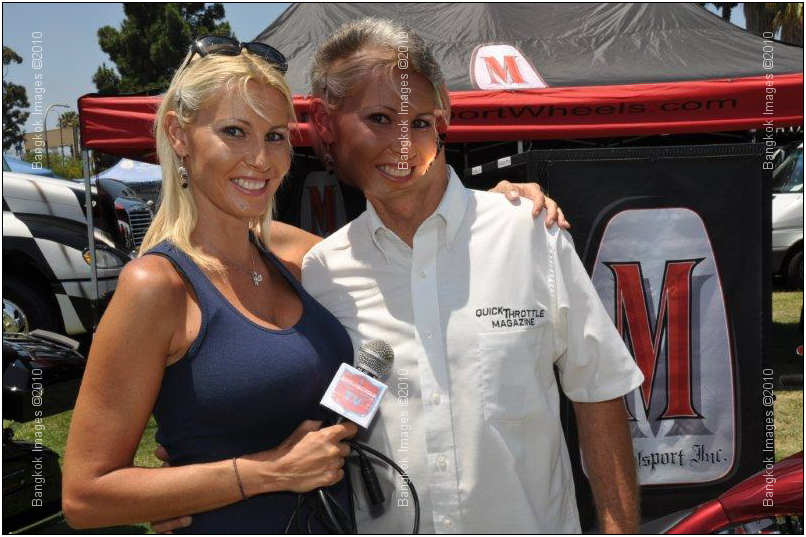
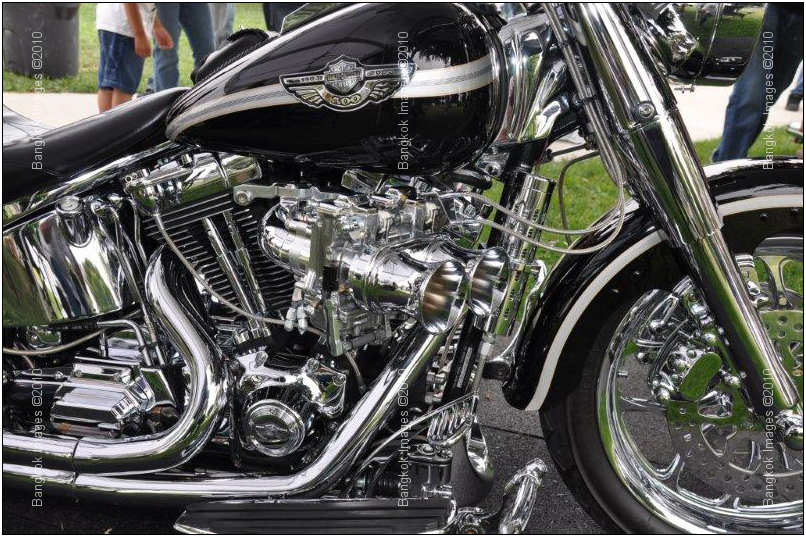
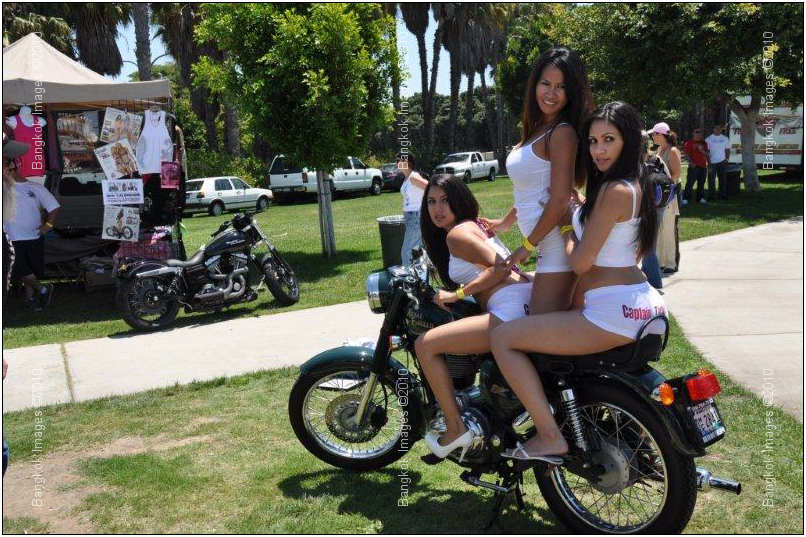
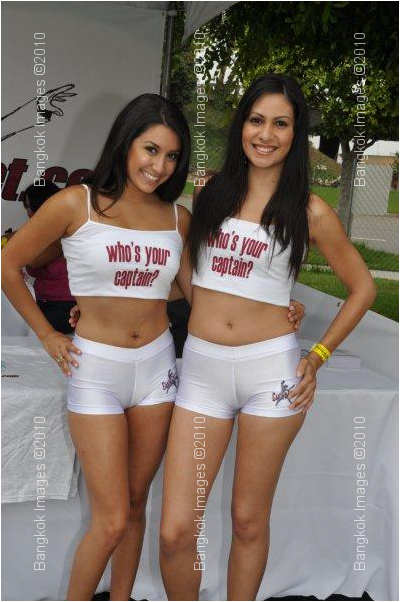

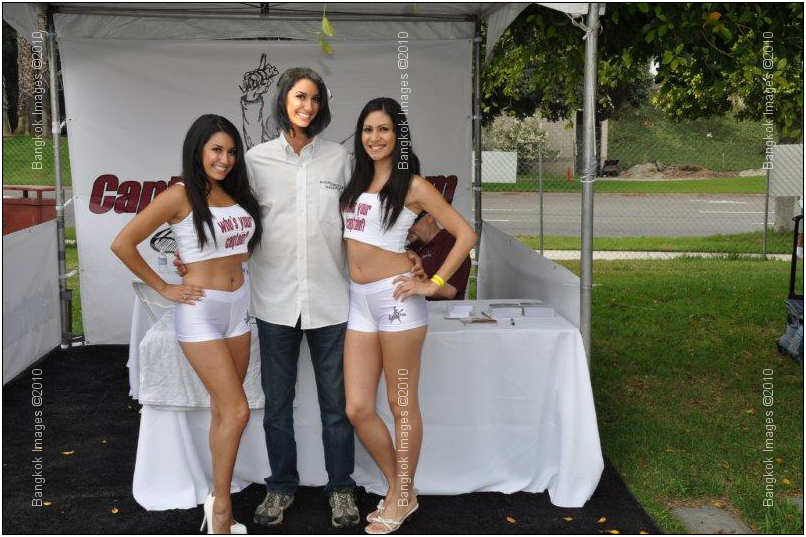
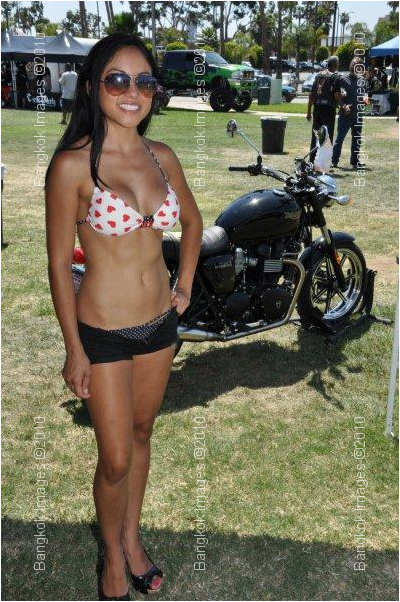
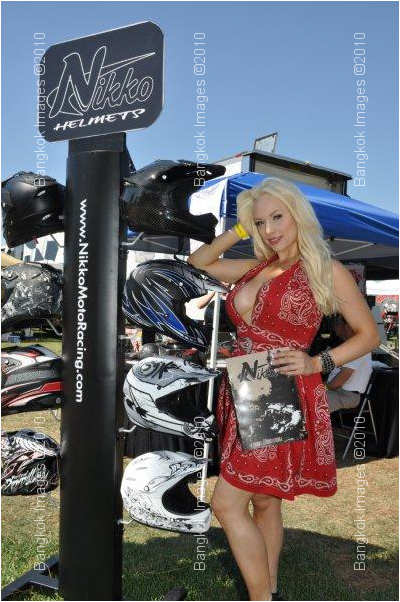
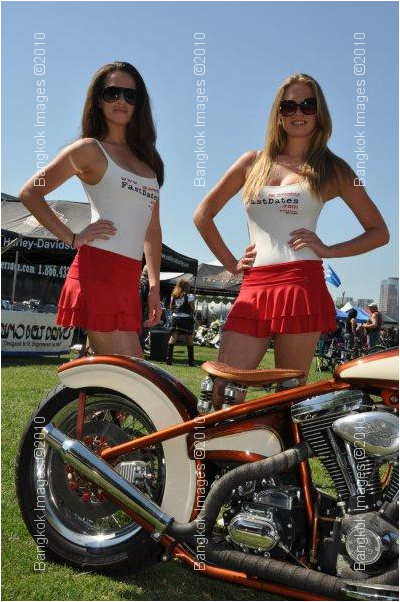
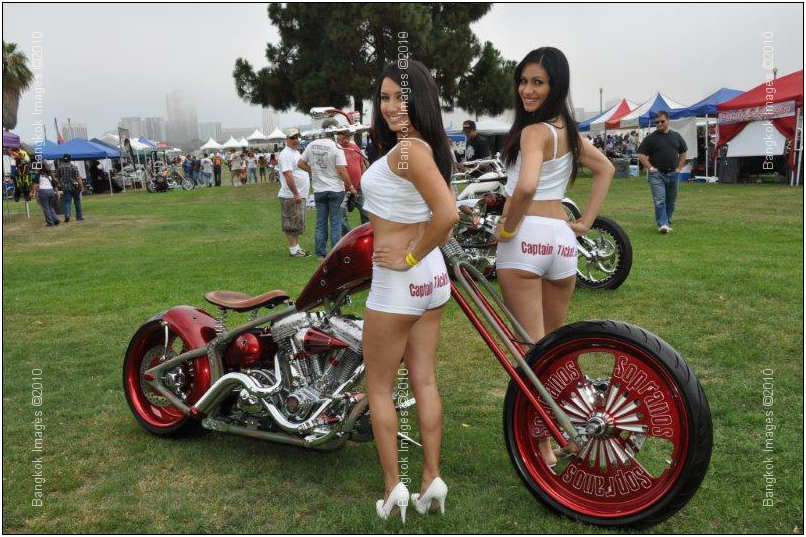

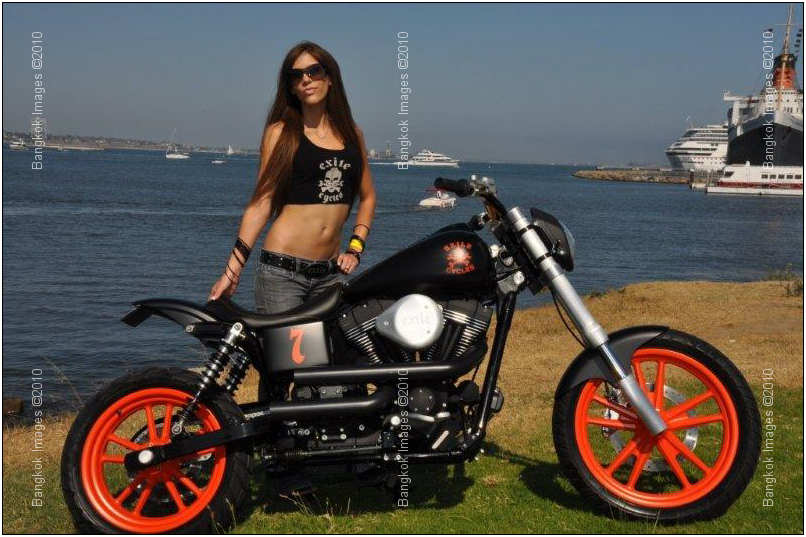
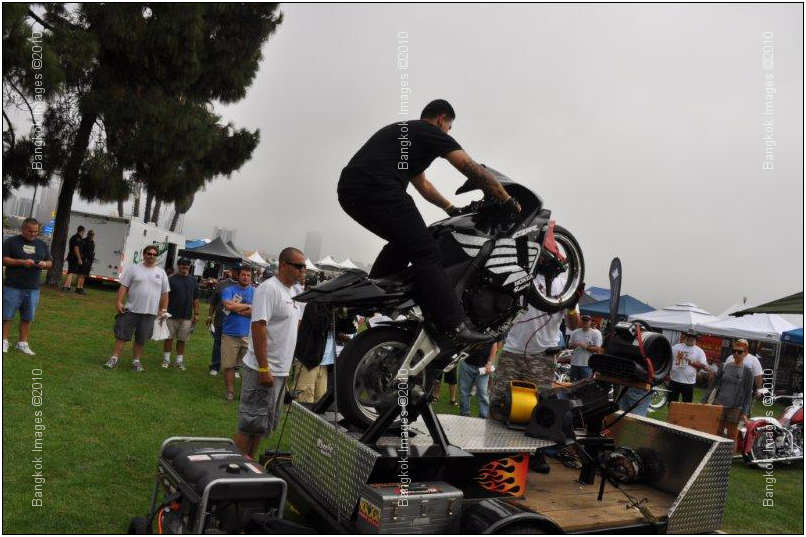
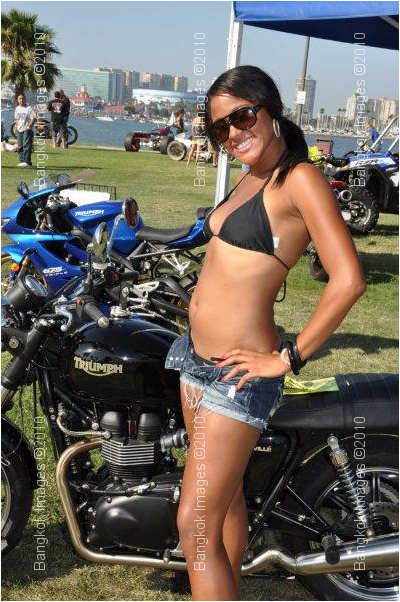
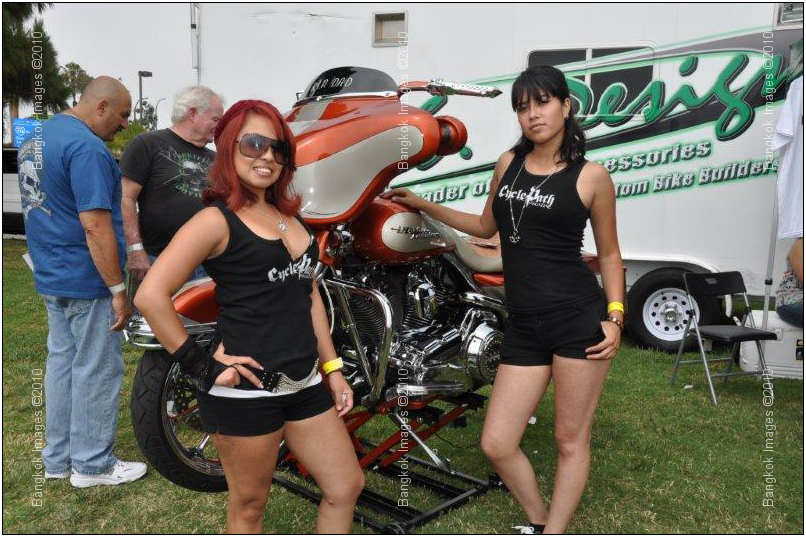
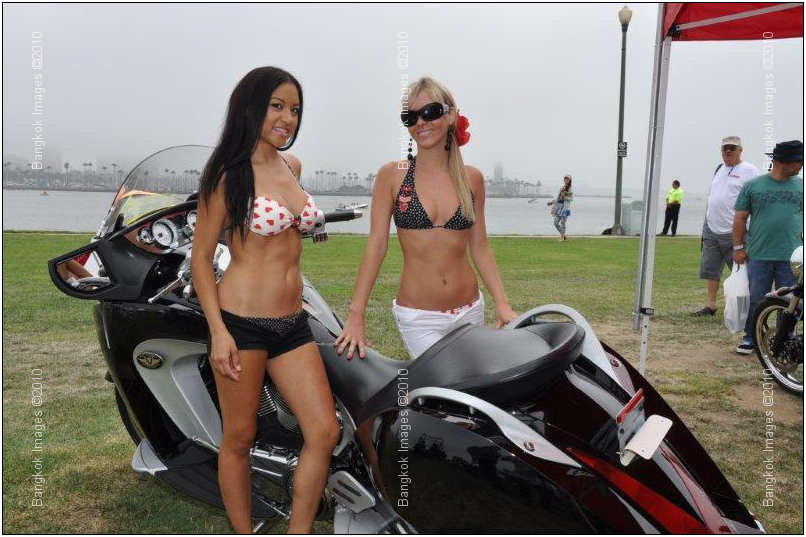
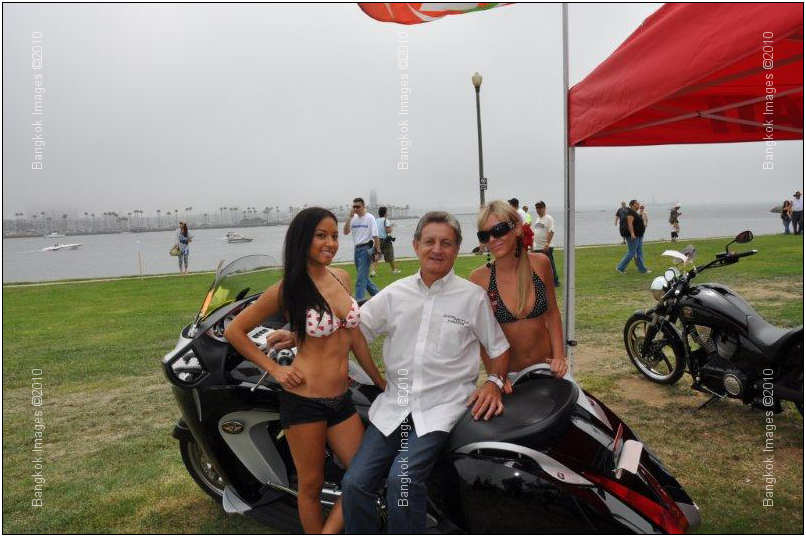
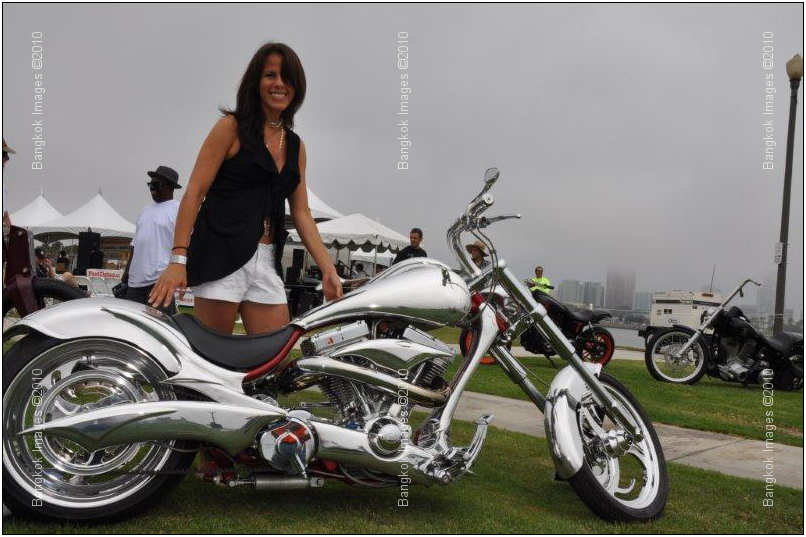
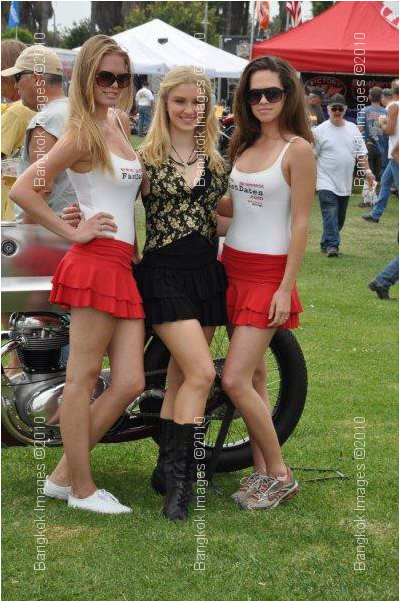
Bart –
I’m sure many are wondering how to get your job! Great bike pics and the girls seem to be having fun. Always fun to look at! Thanks for your contributions.
Steve
I suspect the readers submissions will be a highly anticipated section of this column and I encourage anyone with photographs and travel accounts they'd like to share to please send them to me at: info@BangkokImages.com
Readers Questions *menu
From a forum entry on Bangkok Images:
Hello, can anyone help with this question.
I use PhotoCAL to calibrate my system and have to make sure that adobe gama is not in the startup folder.
In Win XP installing programs like Adobe Photoshop CS2 Adobe Gama is installed in the startup folder.
I have Win 7 on my Laptop and I cannot find any folders that show a similar folder, so is adobe gama still loaded by default.
Charles
Hi Charles –
As you know, Adobe Gamma was a 'very rough' method of adjusting your screen and colors from years past. When using a color profile software/device you'll for sure want Adobe Gamma disabled
or it will conflict with your color profiling device and create all kinds of havoc.
I think.. but I'm not sure.. that because Windows XP doesn't have a color management control applet, or at least it didn't until Windows provided an optional color management applet somewhere between SP2 and SP3.. that Adobe automatically
installs their gamma profiler on XP. Vista and Win7 both have built in color management applets.. and while there used to be some issues with Vista's color applet working correctly.. those issues have been long solved with current video card
driver updates along with Window's Vista service pack (SP) updates. Win7 had absolutely no issued with it's color management unless you're trying to color profile two monitors and
then it 'can' get a bit weird and is a topic unto itself.
For these reasons I don't think Adobe installs it's Gamma profilers on Vista or Windows7 systems. At least nothing I've ever noticed when setting up many such computers.
However, there are two places to check. One is your startup folder. Make sure only what you need is here.
Another is your msconfig.sys file. You can type this in your run command line in your Win7 startup menu and it will come right up. Choose the "startup" tab and uncheck anything that says
"Adobe Gamma" if you can find something (you won't) and then take this time to look at all those programs starting and running automatically and ask
yourself if you really need them. If in doubt if you need one of those programs then Google it and you'll find multiple (hundreds) of references talking about that file and if it's safe to disable it. I recommend only running what you
absolutely need in your startup folder. On systems with limited CPU power or limited ram, these adjustments can give you a huge performance gain. Even with a high power system you can get a huge performance gain.. for sure the way to manage your
system.. as little loaded in resident memory as possible.
I hope this helps.
Steve
Please submit your questions to info@BangkokImages.com All questions will be answered and most will show up in the weekly column.
A Snapshot of Bangkok Images Week in Review *menu

Another very slow week. Not much going on at all besides some new equipment coming in, upgrading the video cards on our workstation, and testing some new hybrid drives I’ll report on later.
The “What’s New” area of our site is becoming popular and I try to update it several times a week with new
and interesting information. Check it out to keep track of Bangkok Images exploits and commentary throughout the week.
Still a ton of hardware and software reviews being formed, but it takes a while to properly review software and get a good feel for it. We’re still looking at the second part of the new Sony NEX-5 and our 16mm lens is due in this week, a NEC wide-gamut
colorimeter, the NEC monitors themselves, image hoods, Seagate Momentus Hybrid SSD/Mechanical hard drives (already arrived), Adobe CS5, Topaz, PTIgui, and the new Office Professional 2010.
We still have a complete system build we sourced the parts for and documented coming your way soon, a high-end imaging system you can get the parts for at Pantip and build yourself. This week I visited the shop once more, photographed the owner, and made
some very specific inquiries on product returns and support. I hope to bring you this information next Saturday.
Infocus Blog, Two Boxes *menu
Today was a good day. Several months ago my grandmother passed away at the grand old age of 95 and my sister was tasked with the cleanup. She asked me if there was anything I wanted. I knew immediately what I wanted, any and all cameras of any type she
could find. My grandmother never threw away anything so I knew there had to be something there!
Today at the post office there were two small boxes waiting for me with my sisters return address. I could hardly wait to go home and open them up. So I didn’t. I stopped at a closer restaurant and along with a friend and my son opened up the boxes
to discover what was hidden inside.

Kodak Eastman Baby Brownie Special, circa 1939
Something I was really hoping for was a Kodak Eastman Brownie. I’ve seen them, but never had one. In 1939 they sold for $1 new. Today not much more. :O) Made from Bakelite plastic they were very simple, but they were also the “common man’s camera” most families owned during that era. This would include a long span of US history. They were also marketed in other countries. Lucky me, there were two in the box. One had a label that simply said “Danny’s Mother’s Camera.” Danny was my grand fathers name. Now I have a piece of my great grandmothers history. Unfortunately there was no undeveloped film inside, but it appears perfectly usable and I plan on giving it a whirl!

Anscoflex, circa 1950’s
This is almost made of a tin can. It’s in working condition but the viewer wings need repair. It has two built in filters, one yellow, one close up, only one can be used at a time. I twill e interesting to try it out.
There was a Mikona 00135 35mm point and shoot that must of cost less than $5 in its day. I suppose it still works but I’m not that interested in this one. It’s a 1960’s era camera. Another was a Minolta Freedom 50n with batteries
still in it. It’s another P&S 35mm.
There was also a trio of Kodak Instamatics that took the old 126 cartridges and flash cubes.



A real treasure was a Japanese made Kowa Model E with a fixed F2 lens AND a wide angle and telephoto adapter as well as several close up filters. These 35mm cameras were popular as one of the first SLR’s to hit the American market and I’m
eager to give it a try and see how it works!

Then there’s a brick like Argus Rangefinder. Huge and heavy and it appears fully functional. It accepts 35mm film and should be fun to play with.

And finally there is a trio of Polaroid cameras, a 1960’s Colorburst, a One Step, and a newer Impulse model. It had film! We put it in and it works! The film pack powered the flash and took pictures probably 40-50 years since the case was opened!
There were a few other odds and ends in the box as well. I’ll truly enjoy playing with these old relics and experiencing what it was like for my great grandparents, grandparents, and even my parents to capture family images ‘back in the day’.
No one in my family was a “photographer”, these were just inexpensive cameras they picked up because they were inexpensive and available, thought I suspect my grandfather picked up the Anscoflex
to photograph the homes he built and perhaps the Kowa for better family pictures.
Two boxes. Certainly a lot of fun to open and examine and I’m sure I’ll have a load of fun trying out the Baby Brownie Specials during future photo outings. Just imagine, a friend will pull out the latest Canon 1d Mark IV with the super
huge 800mm F5.6 telephoto monster lens, and I’ll reach in my pocket and pull out a small Bakelite Kodak Brownie. I wonder who will get the most enjoyment from the shoot?
Until Next Time..




